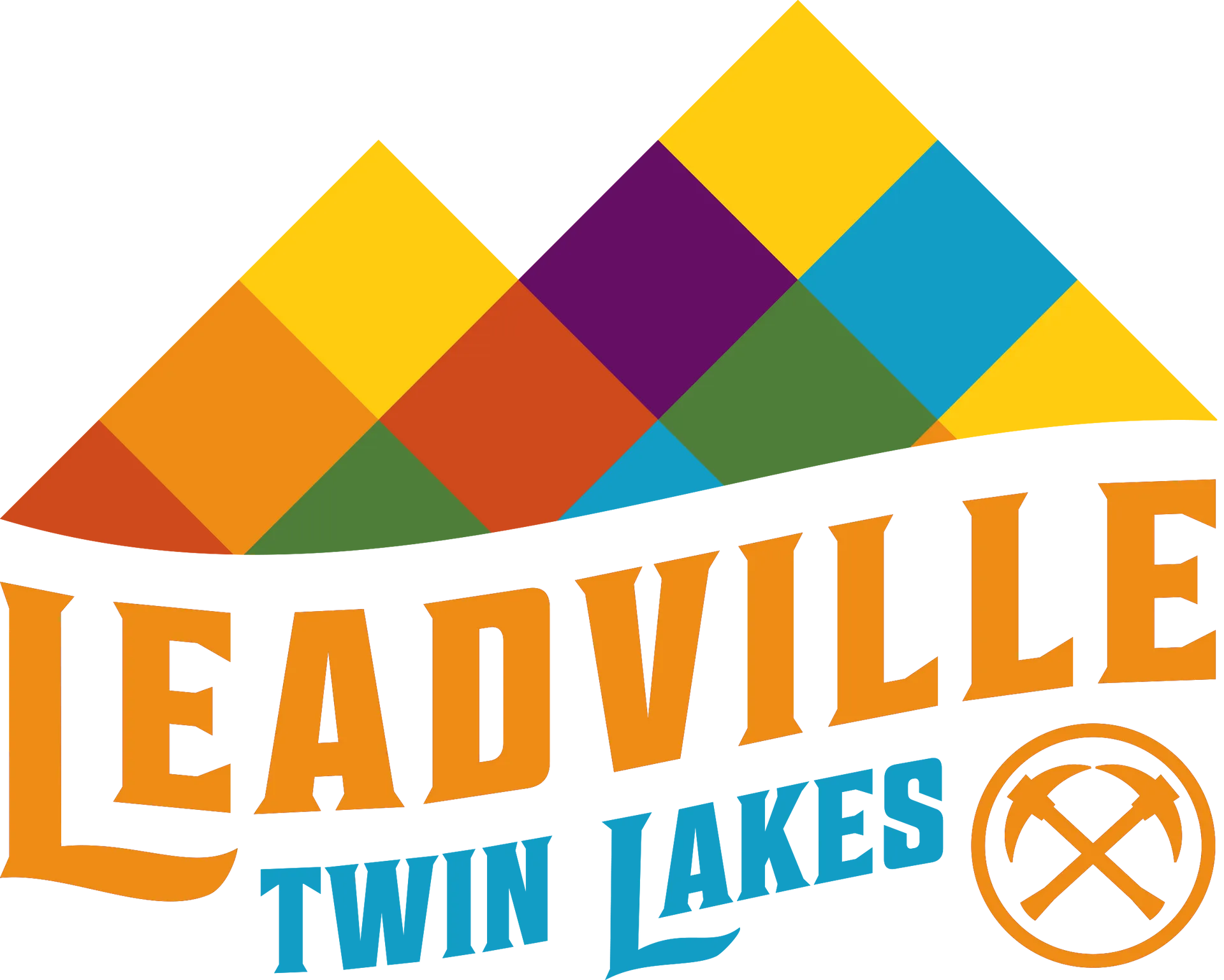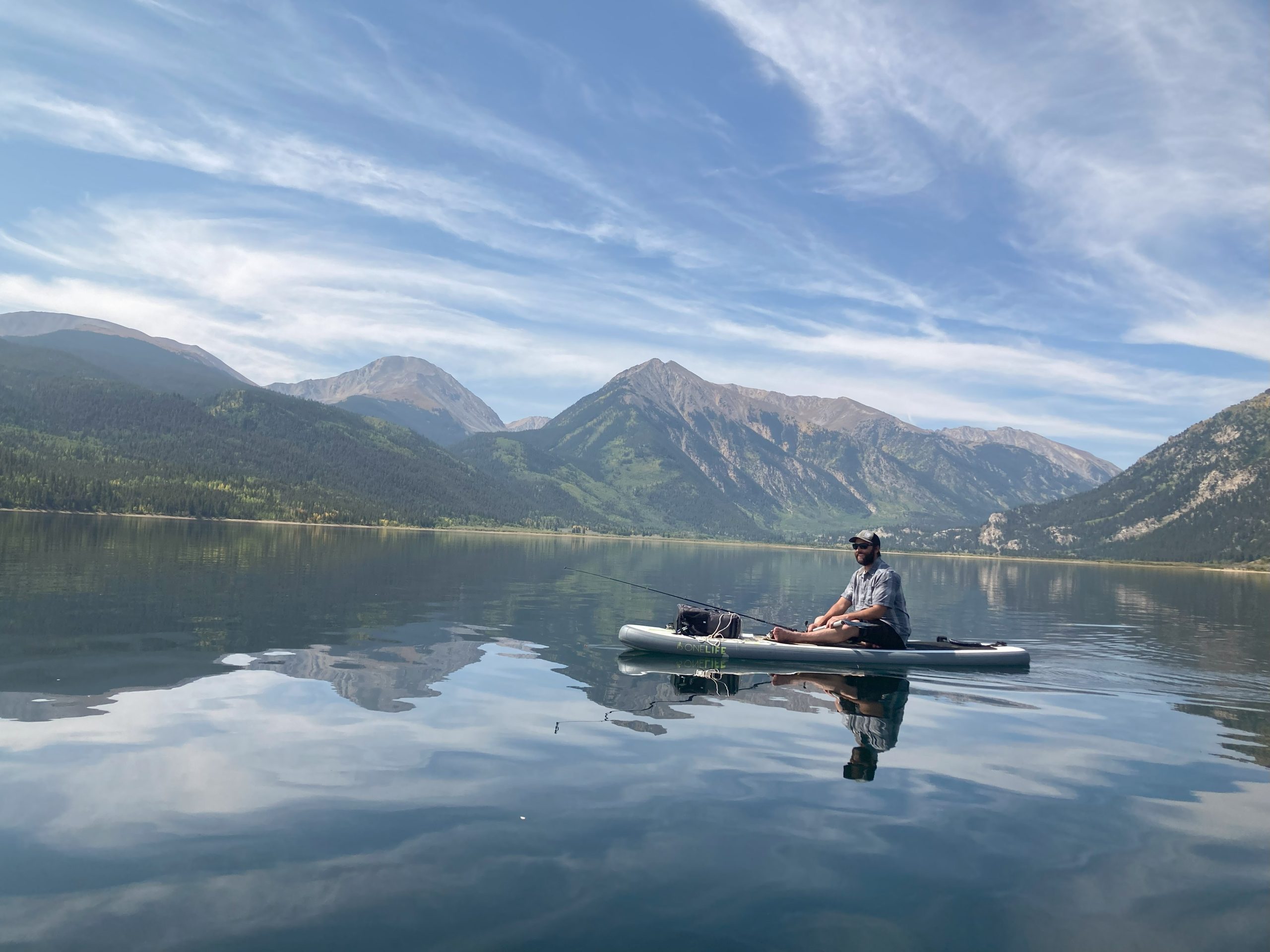History
Perched at a lung-searing 10,152 feet, Leadville is a town that has never done anything halfway. It rose from the muddy boots of gold-hungry prospectors in the 1860s, only to strike it rich in silver and explode into one of the West’s rowdiest boomtowns.
Outlaws and aristocrats rubbed elbows in its smoky saloons while miners clashed with tycoons in bloody labor wars. The silver crash of 1893 nearly wiped it off the map, but Leadville refused to fade, reinventing itself with molybdenum mines, mountain warfare training, and high-altitude endurance races.
Today, it’s a living relic of the Wild West—where history isn’t just remembered, it’s still very much alive.
Download the latest Heritage Guide or pick up at the Visitor Center to learn more and explore Lake County’s history on your own. For a deep dive into the history reach out to the Lake County Public Library’s local history team.
SCROLL DOWN FOR TIMELINE
**photo credits – Lake County Civic Center Association and Lake County Public Library**
Nuche Land
We would like to acknowledge that the Nuche people, also known as the Utes, were the original inhabitants of this land.
HISTORY TIMELINE

Prospectors flooded the Upper Arkansas Valley during the Colorado Gold Rush, originally known as the Pikes Peak Gold Rush, but early placer mining in California Gulch’s Oro City yielded limited results. The true riches of Leadville would come later with the discovery of silver.
Visit California Gulch along The Route of the Silver Kings

A trip to the assayer lead to the discovery of cerussite (lead carbonate) silver ore in 1874 that launched Leadville into one of the richest silver-mining boomtowns in the world.
Miners from around the world flocked to the area and over time many minerals were pulled from the earth including: gold, silver, lead, zinc, iron, copper and molybdenum. Seventeen smelters were built and more than 100 miles of railroad track would be laid to serve the growing and profitable city.
Learn more about mining and minerals at The National Mining Hall of Fame & Museum

Heading to the west during the gold rush Horace and Augusta Tabor built an empire from store keeping, grubstaking, silver mining and more. Horace was a key figure in Leadville’s history serving as Postmaster General, Mayor and a short stint as a US Senator. The Tabors funded landmarks like the Tabor Opera House, the Tabor Grand Hotel and Denver’s Tabor Block.
Horace’s scandalous 1883 marriage to Elizabeth “Baby Doe” McCourt became one of Colorado’s most infamous love stories. The “Silver King and Queen” lived lavishly until the silver crash of 1893 resulting in a rapid fall from the top.
Learn more about the Tabors at The Tabor Home.

Margaret Tobin in Leadville at the age of 18, moved in with her brother and worked in stores on Harrison Avenue. Margaret fell in love with miner James Joseph “J.J.” Brown and started a family. J.J.’s hard and innovative work for the Ibex Mining Co. would soon pay off as his stock in the company quickly rose and the Brown family moved to Denver.
Margaret “Molly” gained worldwide fame as a survivor of the Titanic, and as a prominent philanthropist and social activist.
Envision what Leadville life was like in the 1880s at The Healy House Museum & Dexter Cabin

As Leadville’s mines expanded, tensions grew between mine owners and workers, leading to labor strikes and violent conflicts, including the 1880 Leadville Miners’ Strike, one of the earliest labor movements in Colorado and the Leadville Strike of 1896, a nine month conflict resulting in violent gun battle between strikers and hired mine guards.
Come in August to experience Leadville’s Boom Days and celebrate our mining heritage.

In 1893 President Grover Cleveland repealed the Sherman Silver Purchase Act, removing the requirement of the US Treasury to purchase a certain amount of silver each month.
A silver panic ensued and devastated Leadville causing closures, economic collapse, and a sharp population decline. Mining companies came to rely on lead and zinc mining.
Visit The Matchless Mine & Baby Doe’s Cabin where Baby Doe spent her final years.

In efforts to draw sightseers, create jobs, and rescue the town’s flagging economy the plan for Leadville’s Ice Palace was born.
The palace, built atop of the hill between west 7th and 9th streets, Leadville’s Ice Palace was comprised of ice blocks 3 to 5 feet thick and covered over 3 acres. The palace included 2 ballrooms, a skating rink, a restaurant, ice sculptures and 90 foot towers. Open from January through March of 1896, it’s glory was short lived and despite 250,000 visitors, the high cost to build and operate resulted in a loss.
View a Ice Palace replica at The Heritage Museum

Figures like Doc Holliday and Jesse James roamed Leadville’s streets, frequenting its saloons and gambling halls. The city’s rough reputation made it a hotspot for outlaws and gunslingers.
Step into the Wild West at The Silver Dollar Saloon.

The Climax Molybdenum Mine, located atop Fremont Pass, became the world’s largest producer of molybdenum, a crucial alloy in steel production. It kept Leadville’s economy alive long after the silver boom faded.
Learn about Molybdenum and the Climax Mine at Leadville’s Visitor Center

The elevation marker at Leadville’s City Hall reads 10,152 feet above sea level, making it the highest incorporated city in North America. Acquiring the nickname “Cloud City” Leadville attracts adventurers, athletes, and history buffs year-round.
*We are aware Alma Colorado is a pinch higher than Leadville but they are holder of the title of “highest town”, not city.

During WWII, Camp Hale was established near Leadville to train the 10th Mountain Division, an elite skiing and mountaineering military unit that played a key role in the war effort in Europe.
Following the war the 10th Mountain Division returned and many made significant impacts to the ski and outdoor industries.
Descendants and supporters continue to honor the veterans through events held in February and May.
Recreate at the Camp Hale National Monument after driving the Top of the Rockies Scenic Byway.

Leadville has long been a hub for winter sports, from early ski-jumping competitions to today’s backcountry skiing and Cooper Hill, a historic ski area that traces its roots to the 10th Mountain Division.
Step back in time when hitting the slopes at Ski Cooper.

One of the most thrilling winter traditions in the West, Ski Joring has been a staple event in Leadville since 1949. The first weekend in March, skiers are pulled by galloping horses down Leadville’s snow filled Harrison Avenue, launching off jumps and grabbing rings in a high-speed spectacle. This blend of Old West horsemanship and extreme skiing draws competitors and spectators from around the world.
Sit in a booth at the Golden Burro Cafe, the same location locals sat in 1949 when they were inspired to bring Ski Joring to Leadville.

Since 1949, Boom Days has celebrated Leadville’s Old West and mining history with burro races, mining competitions, a parade, talent show, costume contests and more, drawing visitors from all over.
Don your best Victorian wear and enter the Boom Days Costume Contest & Mosey competition in August

Founded in 1983, following the closure of Climax Mine, the Leadville Trail 100 ultramarathon and Leadville 100 MTB race have become world-famous endurance challenges, bringing thousands of athletes and spectators to town.
Explore the race course trails on your own or enter in one of the many races that are now part of the Leadville Race Series.

Leadville’s downtown district was designated a National Historic Landmark in 1966, preserving its 19th-century architecture and mining heritage for years to come.
Take a step back in history with an online walking tour of downtown Leadville

Built in just 100 days in 1879, the Tabor Opera House was once “the finest opera house west of the Mississippi”.
Initial efforts made by Evelyn Furman, the City of Leadville and the Tabor Opera House Preservation Foundation to rescue the Opera House have set in motion the revitalization one of Colorado’s most historic theaters, bringing tours and live performances back to Leadville.
Come see it for yourself! Attend an event or go on a tour of The Tabor Opera House.

After being dormant for decades, the Climax Mine resumed production in 2012, once again contributing to Leadville’s economy and reminding visitors of the area’s deep mining heritage.
Learn more about the Climax Molybdenum Mine at the Leadville Visitor Center.

Consisting of over 70% public lands, Lake County is one of Colorado’s premier outdoor recreation destinations. Offering opportunities for hiking, biking, fishing camping, skiing and more against a stunning alpine backdrop.
Named for the mining that once took place there, Turquoise Lake offers recreators spectacular views of the surrounding mountain peaks from a rich pine forest.
Nearby, Twin Lakes originally served as the hub for both lavish summer resorts serving wealthy mining families and as the start of a supply transportation route along the high elevation toll road to Aspen.

Despite economic ups and downs, Leadville remains a living testament to Colorado’s rugged frontier history, blending adventure, history, and endurance in a way few places can.
Experience Colorado on Another Level in Leadville and Twin Lakes.





